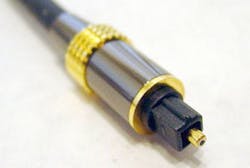LONG BEACH, Calif., 21 Jan. 2013. The connector market for embedded computing is forecast to reach $168.5 million in 2013, up 4.2 percent year over year from 2012, said Bob Hult, director of product technology at Bishop & Associates Inc., today at the VITA Embedded Tech Trends conference in Long Beach, Calif.
The priority of connectors in overall system design has transformed over the years, Hult reveals. "In the past, connectors were seen as necessary evil and a source of failure and added cost; they were put on at end of the design cycle, and a low priority. That has changed quite a lot; people recognize that connectors are essential."
Today, few connectors fail in an application. In most cases, a connector failed because something else on the system had failed, such as a capacitor. Connectors are now proven to be remarkably reliable." Globally, connectors overall constituted a $48 billion business in 2011.
Current embedded computer trends include:
-- Size, weight, and power (SWaP);
-- increasing data rates;
-- environmental resistance (especially for avionics);
-- cost sensitivity (COTS);
-- standards driven; and
-- increasing interest in fiber optics.
"There's a huge amount of interest in fiber in all aspects, including bandwidth and headroom for bandwidth," Hult says. "There is interest in fiber inside the box, not just as an external I/O from box to box, but from board to board and even chip to chip. Fiber is going to be a huge area of advancement and utilization."
Market trends and applications influencing connector design include:
-- higher pin counts/lower mating forces,
-- smaller contact centerlines,
-- increased power rating,
-- higher temperature ratings,
-- ruggedized/sealed connectors,
-- tighter impedance control,
-- optimized PCB launch, and
-- new contact designs and plating.



